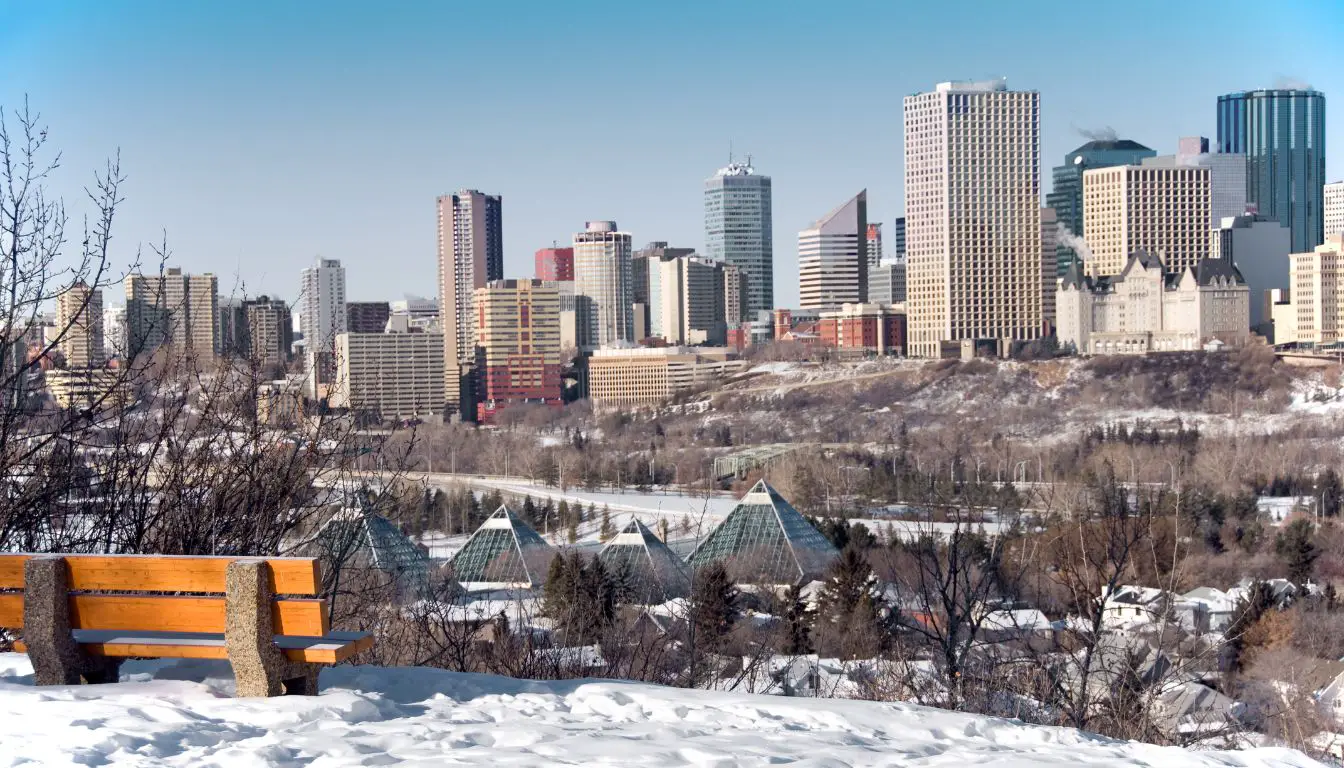How Much Down Payment For a House In Edmonton – Uncovered
Key Takeaways:
- Homebuyers typically require at least 5% down payment for a house in Edmonton.
- First-time homebuyers may qualify for government programs offering down payment assistance or reduced down payment requirements.
As a prospective homeowner in Edmonton, understanding the down payment requirements is crucial.
In this guide, I will break down the down payment percentage, explore mortgage loan options, and discuss government-assisted programs available to first-time homebuyers.
I’ll provide strategies for saving for a larger down payment, considering incentives, and evaluating your financial readiness for homeownership.
Discover the mortgage lenders and their down payment policies in Edmonton, and get answers to frequently asked questions about down payments.
| Down Payment | House Price | Mortgage Amount | Monthly Payment |
| 5% | $300,000 | $285,000 | $1,325 |
| 10% | $300,000 | $270,000 | $1,221 |
| 15% | $300,000 | $255,000 | $1,149 |
| 20% | $300,000 | $240,000 | $1,094 |
How Much Down Payment Is Required for a House in Edmonton?
In Edmonton, the down payment for a house typically ranges from 5% to 20% of the purchase price.
Breaking Down the Down Payment Percentage
The down payment percentage for a house in Edmonton varies depending on several factors, including the purchase price of the home, your credit score, and the type of mortgage you choose.
Generally, a minimum down payment of 5% is required for a conventional mortgage.
However, there are programs available that allow for down payments as low as 3.5% or even 0% for qualified buyers.
Mortgage Loan Options and Down Payments
Mortgage loan options in Edmonton vary, including fixed-rate, variable-rate, and adjustable-rate loans.
Down payment requirements typically range from 5% to 20% of the purchase price.
Government programs like the Home Buyers’ Plan (HBP) and First-Time Home Buyer Incentive (FTHBI) may offer assistance to eligible buyers.
Exploring these options with a mortgage professional can help determine the best loan and down payment strategy.
Government-Assisted Programs for Down Payments
Government-assisted programs can offer financial aid to homebuyers in Edmonton struggling to save for a down payment. These programs, like the Home Buyers’ Plan (HBP) and the First-Time Home Buyer Incentive (FTHBI), allow individuals to withdraw funds from their RRSPs or receive a shared equity mortgage with the government to reduce the upfront costs of purchasing a home.

Down Payment Strategies for Edmonton Homebuyers
Edmonton homebuyers, listen up! Discover smart down payment strategies to make your dream home a reality.
Saving for a Larger Down Payment
Saving for a larger down payment can provide significant benefits.
It can lower your monthly mortgage payments, reduce the amount of interest you pay over the life of your loan, and increase your equity in your home.
To save for a larger down payment, consider creating a budget to track your spending and identify areas where you can cut back.
Additionally, consider taking on a side hustle or part-time job to boost your income.
Considering First-Time Homebuyer Incentives
First-time homebuyer incentives can help reduce the financial burden of purchasing a property. These incentives may include down payment assistance programs, tax credits, or grants.
Research available incentives in Edmonton and determine your eligibility.
Consider factors such as income, property type, and occupancy requirements to maximize your chances of securing these benefits.

Exploring Alternative Financing Options
Alternative financing options can provide Edmonton homebuyers with more flexibility and potentially lower upfront costs. These options may include government programs, such as the Home Buyers’ Plan, rent-to-own agreements, and creative financing solutions offered by lenders or sellers.
Exploring these alternatives can open doors to homeownership for those facing challenges with traditional down payment requirements.

Evaluating Your Financial Readiness for Homeownership
To secure homeownership, thoroughly evaluate your financial situation: review income, debts, and savings to gauge affordability and readiness.
Calculating Mortgage Affordability
Calculating mortgage affordability involves evaluating your financial situation to determine the maximum loan amount you can comfortably manage.
Factors to consider include your income, debts, expenses, and desired down payment.
Lenders typically use the debt-to-income ratio (DTI) to assess your ability to repay the loan.
A DTI of 36% or less is generally considered acceptable.

Weighing Rent vs. Buy Decision
Deciding between renting and buying a home involves careful financial considerations. Evaluate your long-term plans, financial stability, and housing preferences.
Consider factors such as mortgage payments versus rent, homeownership costs, potential appreciation, and lifestyle changes.
Assess your readiness for the responsibilities and commitment of homeownership before making a decision.
Budgeting for Additional Homeownership Costs
Budgeting for additional homeownership costs is crucial for a secure financial future. Factor in property taxes, insurance, repairs, and utilities.
Create an emergency fund for unexpected expenses.
Consider homeowners association fees, if applicable. Regular maintenance and prudent financial planning ensure long-term homeownership success.
Mortgage Lenders and Down Payment Requirements in Edmonton
In Edmonton, mortgage lenders typically require a minimum down payment of 5% of the purchase price for a residential property.
Comparing Mortgage Rates and Down Payment Policies
Comparing mortgage rates and down payment policies is crucial to secure the best deal.
Lenders offer varying interest rates and down payment requirements.
Evaluate multiple options to find the most favorable terms.
Consider factors such as your credit score, debt-to-income ratio, and property value to determine the most suitable mortgage option for your financial situation.
Negotiating with Lenders for Better Down Payment Terms
Negotiating with lenders for better down payment terms in Edmonton involves effective communication and understanding of your financial situation.
Research different lenders and their down payment requirements.
Be prepared to provide documentation and discuss your financial strengths, including income, assets, and debts.
Consider offering a larger down payment to secure a lower interest rate.
Explore options like government assistance programs or down payment assistance programs that may be available.
Building a strong relationship with the lender can also help facilitate successful negotiations.
Online Mortgage Calculators for Down Payment Estimates
Online mortgage calculators provide accurate down payment estimates tailored to your financial situation.
With just a few clicks, you can calculate your down payment percentage and amount based on your desired home price, loan amount, and mortgage interest rate.
These tools simplify the mortgage application process and help you plan your home purchase effectively.
Frequently Asked Questions About Down Payment for Edmonton Homes
What is the minimum down payment required in Edmonton?
In Edmonton, the minimum down payment required for a home purchase varies based on the purchase price. For properties below $500,000, a minimum of 5% down payment is required.
For properties between $500,000 and $999,999, a minimum of 10% down payment is necessary.
For properties over $1,000,000, a minimum of 20% down payment is mandated.
What government programs assist with down payments in Edmonton?
In Edmonton, the Homeownership Savings Plan (HOSAP) offers assistance to first-time homebuyers through incentives and matching grants. Additionally, the Canada Mortgage and Housing Corporation (CMHC) provides mortgage loan insurance to facilitate down payments as low as 5%.
How much should I save for a down payment in Edmonton?
The recommended down payment for a house in Edmonton varies depending on the purchase price. Generally, a 5% down payment is required for homes under $500,000, while a 10% down payment is recommended for homes over $500,000.
However, a larger down payment can provide you with a lower interest rate and reduce your monthly mortgage payments.
How can I qualify for a first-time homebuyer incentive in Edmonton?
To qualify for the first-time homebuyer incentive in Edmonton, you must be a Canadian citizen or permanent resident, have a minimum down payment of 5%, and meet the income and debt-to-income ratio requirements set by the government. You must also purchase a home in Edmonton that meets specific criteria, such as being priced below a certain limit.
Are there any alternative financing options available in Edmonton?
Alternative financing options in Edmonton include government programs, private lenders, and rent-to-own agreements.
Government programs like the Home Buyers’ Plan and the First-Time Home Buyers’ Incentive provide financial assistance.
Private lenders offer flexible terms and rates.
Rent-to-own agreements allow buyers to rent a home with the option to purchase it later.
Final Verdict
In Edmonton’s dynamic housing market, understanding the intricacies of down payments is crucial. The required down payment percentage varies based on loan types and programs.
Government-assisted initiatives and first-time homebuyer incentives can ease the financial burden.
Strategic planning, saving diligently, and exploring alternative financing options empower prospective homeowners to navigate the path to homeownership. Thorough research, mortgage affordability calculations, and budgeting for additional costs ensure a well-informed decision-making process.
By evaluating mortgage lenders, comparing rates, and negotiating terms, homebuyers can optimize their down payment strategies.
With careful planning and informed choices, securing a home in Edmonton becomes a more attainable goal.







